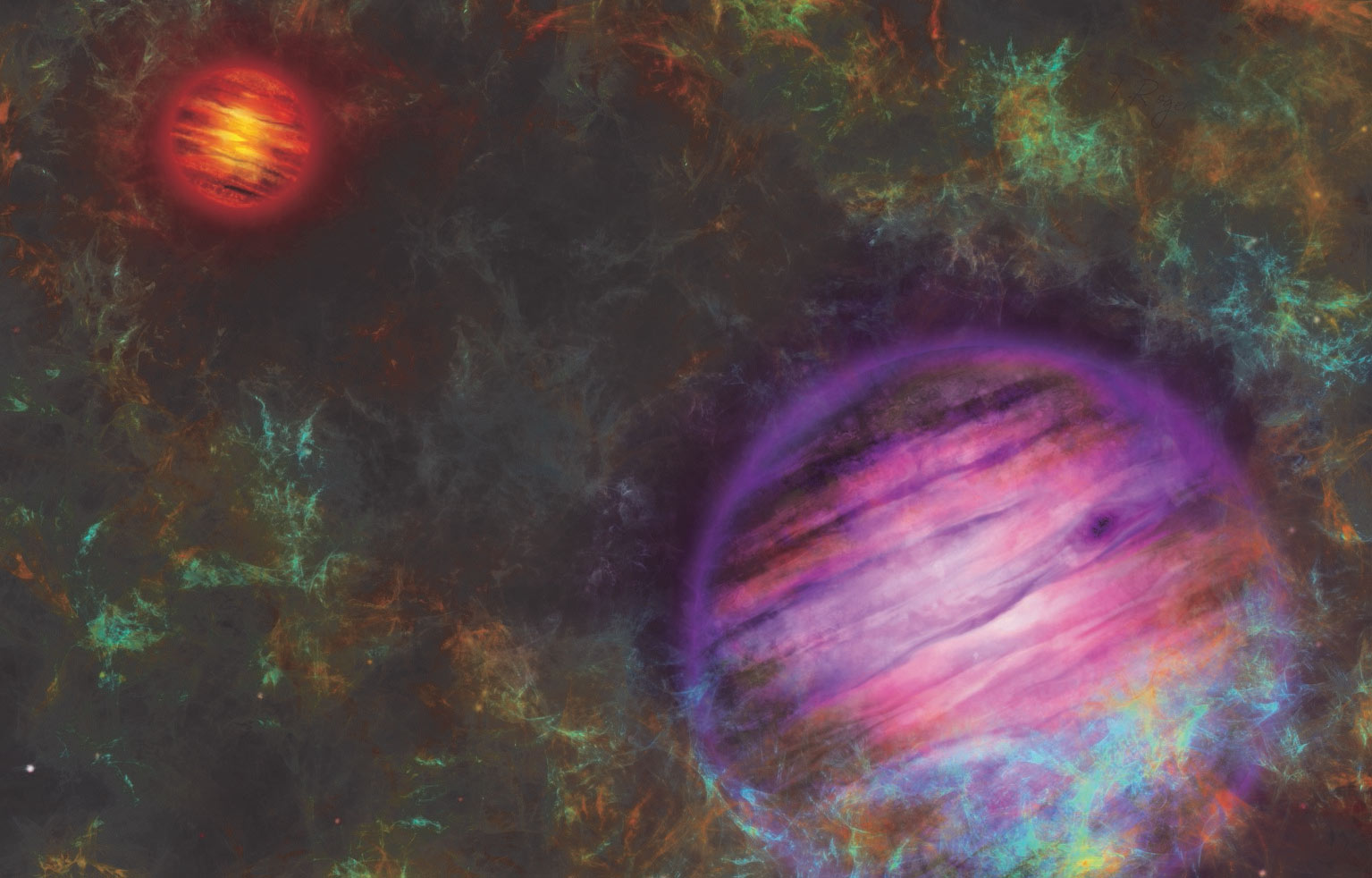

Using NASA’s Hubble Space Telescope, Professor Katelyn Allers, physics & astronomy, and postdoctoral researcher Blake Pantoja observed the astronomical anomaly of the sort few have encountered before. The binary system, called Oph 98, was detected right after its birth in the young Ophiuchus star-forming region.
Star-forming processes sometimes create astronomical objects called brown dwarfs, which are smaller and colder than stars. Just like stars, brown dwarfs often wander alone through space, but can also be seen in binary systems, where two brown dwarfs orbit one another and travel together in the galaxy.
“What is really interesting about this is that it gives us some firsthand information on the formation of planetary mass objects, and because they’re so widely separated, we actually would expect these binary companions to form in a more star-like fashion,” Pantoja says.
“Another interesting thing is that the gravitational force holding these widely separated, low-mass objects together is extremely weak,” Allers adds. “We expect this system will be easily disrupted as it continues to evolve.”
One of their surprising findings is that Oph 98 A and B are orbiting each other at a remarkably large distance — about 200 times the distance between the Earth and the sun. Because binary systems like this are very rare, the researchers observed some 30 different objects with Hubble before finding the companion to Oph 98. Confirming that the companion is actually associated with Oph 98 is the important next step, according to Allers.
“The complicated thing with this is that you can see an object that may be next to your target star or brown dwarf, but what’s really tricky is confirming that the companion is actually associated with it and not just some distant star that falls next to it randomly in the sky,” she says. “That’s where proper motion — where you make sure they’re moving together across the sky — is really important.”
The Bucknell researchers have now been awarded time on the Gemini Observatory in Hawaii to continue their research on the Oph 98 system. They plan to gather information on the atmospheric composition of the two planetary mass objects, as well as their formation mechanism.